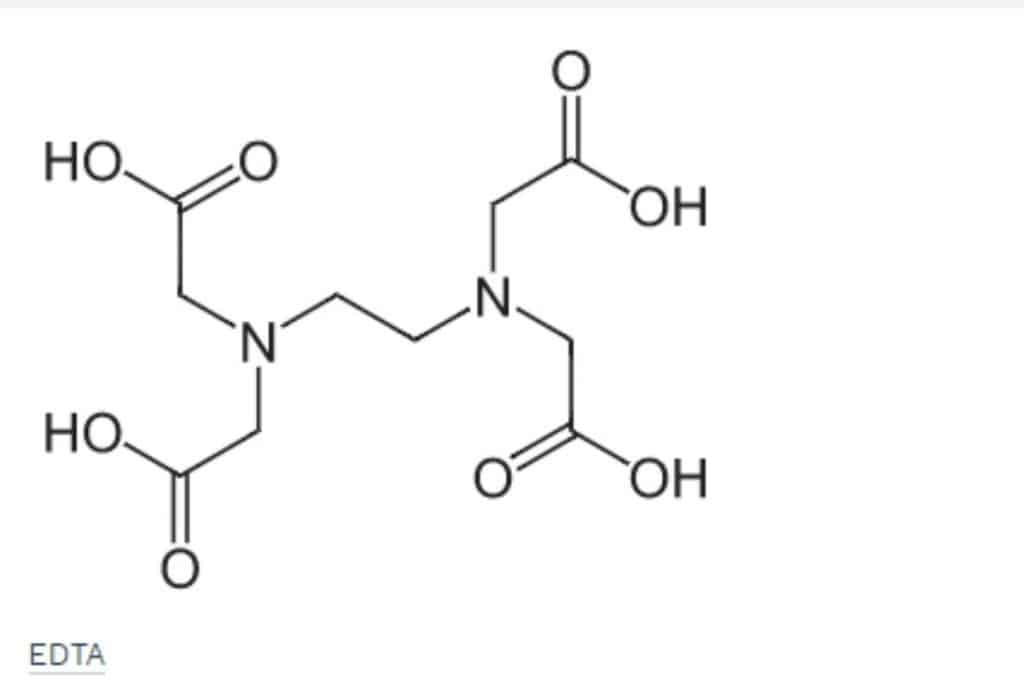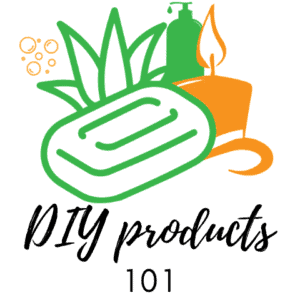EDTA is a water-soluble compound widely used in skincare products, cleansing formulations, cosmetics, and hair care products. But what is EDTA actually used for in soap? And should you also do the same?
Whether you’re seeking a fun hobby, saving money, or pursuing a new business venture, our step-by-step guide makes crafting spa products enjoyable and easy, perfect for hobbies, saving money, or starting a business. Explore 126+ recipes, from soaps to lotions, with our beginner-friendly Quick Start Guide. Ditch store-bought products with unknown chemicals and embrace personalized, high-quality creations that cater to allergies and sensitivities using The Handcrafter’s Companion.
EDTA works as a chelator in soaps. It binds metal ions such as calcium, magnesium, and iron to increase the soap’s shelf life. It also improves the foaming ability of the soap, even in hard water.
However, there is more to it. If you continue reading, you’ll not only learn why EDTA is a vital ingredient in soap making but also why I think you should start adding to your soaps too.
What is EDTA?

EDTA is a synthetic chemical formulation named ethylenediaminetetraacetic (took me one minute to write that…phew) acid. It is also known as edentate sodium, tetrasodium salt, and tetrasodium edentate. It is a water-soluble chemical widely used for medical and industrial purposes.
Two types of EDTA are commonly used in cosmetic and personal care products – Tetrasodium EDTA and Disodium EDTA. Both of them differ in their chemical structure and pH level, but they have nearly similar uses.
Tetrasodium EDTA vs. Disodium EDTA – What Are the Differences:
Tetrasodium EDTA is composed of four sodium cations, whereas disodium EDTA has two. This difference determines the pH at which these compounds give their optimum performance.
The ideal pH range for tetrasodium EDTA is 10 – 11, while disodium EDTA performs best at pH range 4 – 6. Therefore it is necessary to select the best suits your product to get the best results.
Tetrasodium EDTA is used in higher pH products such as creams, soaps, surfactants, and lotions. Tetrasodium EDTA is effective in maintaining clarity and protecting fragrance ingredients.
Disodium EDTA is more soluble in water. Due to this characteristic, it is an essential ingredient in transparent or clear products. It also prevents skincare and beauty products from undesirable changes in consistency, texture, pH, and odor.
Why would you want to use EDTA in soap?
EDTA is mostly added to soaps because of several reasons. Making soap without using EDTA may not produce the desired results, and your soap may also deteriorate quickly. So to counter that, EDTA is which improves the functioning and shelf life of soaps in the following ways:
ETDA is a Chelator:
EDTA is a water-soluble compound that acts as a chelator. It increases soap’s foaming and cleansing ability by forming complexes with mineral ions such as calcium, magnesium, and iron, commonly found in hard water.
ETDA is a Penetration Enhancer:
Tetrasodium EDTA is an essential product used in skin care applications due to its increased skin penetrability. In this way, EDTA boosts the effectiveness of certain ingredients present in the soap formulation as they penetrate the inner layers of the skin.
EDTA as a Preservative:
EDTA also functions as a preservative by inhibiting the growth of outer membranes and biofilms. This is because it inactivates the minerals like zinc, calcium, and magnesium present in the microbial cells. In the absence of biofilms (protective lining/barrier produced by bacteria), bacteria cannot thrive and grow.
EDTA as a Stabilizer:
EDTA keeps the formulations intact and prevents their disintegration. It maintains the color, texture, and consistency of the product. It also prevents the fragrance compounds from losing their smell. Thus we can say that EDTA is vital to keep the soap in good condition for a long time.
Is EDTA safe in soap?
While critics have questioned the safety of EDTA several times, most of the studies proved that EDTA has a negligible influence on the human body when used in skin and body care products. “The Food and Drug Administration” and the “Cosmetic Ingredient Review Expert Panel” have declared the product safe for use in the manufacture of soaps and other skincare products.
There were several types of research conducted to verify the safety of EDTA. EDTA used in skincare products is not penetrated through the skin in quantities enough to cause harm. Studies conducted on mice showed that it does not cause congenital disabilities and cancer in three generations of mice when ingested in the given amounts.
“Environmental protection Agency (EPA)” declared that EDTA is not linked to increased cancer risk in humans.
Is EDTA good for the skin?
It may be safe, but can EDTA be good for your skin? It was concluded that it has no direct influence on the skin, but it may improve skin conditions in several ways. An essential component of skin care products prevents dirt, bacteria, and metal ions from depositing on skin, scalp, and hair.
Better cleaning
Hard water blocks the soap’s capability to cleanse the skin. EDTA allows cleaning products to produce a good foam, which is essential to remove dirt, grime, and bacteria from the skin’s surface.
If the soap does not contain foam properly, it leaves behind the remains of dirt and pollutants on the skin surface, causing several skin problems. EDTA turns hard water into soft water resulting in squeaky clean skin.
Prevents Mineral Deposits:
Your hard water has a high content of calcium, magnesium and other mineral salts dissolved in it. This type of water leaves a residue on your skin and scalp and damages them if used continuously over a while. This residue clogs the pores, which release the skin’s natural oils. Clogged pores are a basic cause of eczema and acne.
Prevents Drying and Collagen Disintegration:
Hard water also deprives the skin of its natural moisture and leaves it feeling dry and dull. This induces the formation of fine lines and wrinkles. The high amount of mineral ions in hard water may form free radicals, which eventually break down the collagen present in the skin leading to premature aging.
A soap and cleanser with EDTA are necessary to remove these mineral ions from the skin’s surface to keep it in good condition.
You can also try to use a water softener which may be a better option in the long run.
Helps Absorb Skincare Formulations:
EDTA present in the soap and skincare products acts as a penetration enhancer. It means that it crosses the skin barrier to deliver the product’s ingredients to the skin’s inner layers. In this way, the formulations get absorbed in the skin to give their benefits, therefore improving the skin’s condition.
Allergies:
In some people, EDTA may cause skin allergies. If you have a proven allergy to EDTA, then use only organic products to avoid such allergies.
Why EDTA is a popular additive to soap?
EDTA is a common additive used in soap making because it improves the shelf life of soap, chelates magnesium and calcium present in hard water.
As a result, they do not minimize the cleansing action a soap has on the skin. It prevents the soap from making sticky soap scum when lye soap comes in contact with hard water.
Dreaded Orange Spots (DOS):
Dreaded Orange Spots are the most common deterioration formed on the surface of the soap. The chelating action of EDTA increases the shelf life of soap by preventing it from forming DOS (Dreaded Orange Spots) or rancidity. DOS appears on the surface of the soap 2 – 4 days after molding has started.
Another common problem faced by soap makers is soap scum. It gives an unpleasant texture and creates a mess when the soap is used. Soap scum also prevents soap from foaming, and it breaks quickly.
Conclusion:
EDTA is a popular additive to soap because no other substance can be so diverse and functional in its properties. By causing negligible harm to human health and the environment, it makes life so much easier.
It is an inexpensive ingredient that is easily available and can be used in several ways. It is equally useful for soap bars and liquid soaps.



